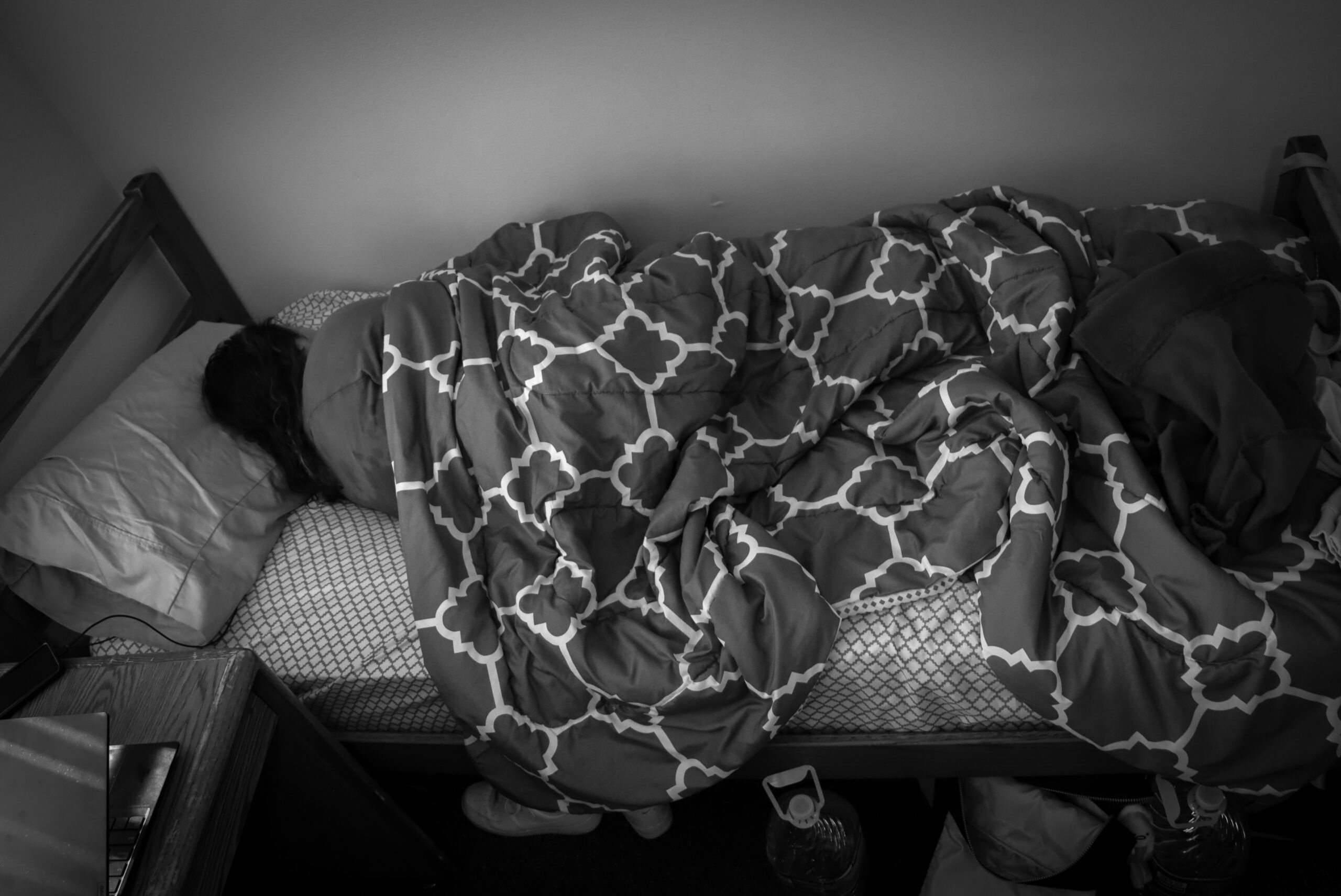Seasonal Affective Disorder (SAD) affects 5% of Americans and 0.5-3% of the general population globally. One of the symptoms includes loss of motivation and lack of energy. Photo by Catalina Garcia
By: Catalina Garcia, Staff Reporter
With the gloomy days upon us, days getting shorter, and the weather getting colder, you might be feeling the “Winter Blues”. The deep feeling of sadness and loneliness is slowly settling within you. The days go by in the blink of an eye and the constant question of, “Where are the days going?” makes a repeated appearance in your thoughts. If any of these sound familiar, you might be part of the 5% of United States adults that experience seasonal depression, also clinically known as “Seasonal Affective Disorder” (SAD).
SAD affects 0.5-3% of people in the general population in the U.S. About 10-20% of individuals with general depressive disorder experience SAD, and 25% of individuals with bipolar disorder also experience SAD.
For many around this time of year, symptoms of the ever-growing seasonal depression start in the fall season and carry over into the winter. Symptoms for seasonal depression include but are not necessarily limited to; feeling sad most days, loss of interest in activities, low energy, feeling sluggish, difficulty concentrating, feeling hopeless, worthless, or guilty, and having frequent thoughts of death or suicide.
To a big surprise, seasonal depression is also not only limited to the fall and winter months, as most people think, but individuals can also experience seasonal depression in the spring and summer months as well. While individuals in the fall and winter gain weight, have low energy, and sleep more; individuals in the spring and summer with SAD experience symptoms like; insomnia, weight loss, and high agitation and anxiety. But the question remains; Why do individuals experience Seasonal Affective Disorder?
According to Mayo Clinic, a non-profit organization that focuses on health and medical research, for those who experience SAD during the fall and winter months, it can be a factor of not receiving enough sunlight. The lack of sunlight can alter the individual’s internal, or biological clock, and leave them with feelings of depression.
Fewer hours of sunlight, common in the months of Sept. through March., can result in the body’s drop in serotonin levels which leads to a more depressive state.
Adriana Martin del Campo, a Master of Social Work student at California State University, Dominguez Hills, reflects how her seasonal depression alters her productivity, “when the weather gets gloomy and it feels cold out, I just don’t want to do anything or go anywhere… all I want to do is just stay in and lay in bed,” she said. According to Martin del Campo, the feeling of loss of motivation is not a good mix when it comes to the workload of a Master’s program, especially social work.
Martin del Campo’s symptoms of her seasonal depression do not happen every winter. Martin del Campo falls in the 30-50% of people who experience SAD in non-consecutive years. They skip years and experience their SAD every other year, meaning that they simply never know if they will be affected by their SAD or not.
For those diagnosed with bipolar disorder and experiencing SAD during the spring and summer months, can bring on the feelings of mania or the less intense form of mania called Hypomania. For those not diagnosed with bipolar disorder that experience SAD, in the spring and summer months, due to there being more sunlight hours, it can make the person feel anxious and cause a lack of sleep leading to the feeling of depression.
Dr. Adam Kaplin, a psychiatrist at John Hopkins Medical, believes those that experience their seasonal depression in the fall and winter months find themselves in the spring and summer with the energy and motivation to eventually commit suicide. This is due to them being in solitary for months on end. They then emerge into a time of rebirth and rejuvenation and feel dark and lonely.
One of the top and most popular effective treatments for fall and winter SAD is more sunlight. But since there is less sunlight during these months a Sunlight Lamp is a highly encouraged substitute to help. Some other clinical treatments for SAD include; cognitive behavioral therapy (CBT) or antidepressant medication (if prescribed by a doctor).
For individuals that are trying to avoid clinical treatments some things that Martin del Campo does to try and navigate through her seasonal depression is going for a walk to distract herself from her thoughts or feelings, if she is feeling tired, simply going to sleep and trying to catch up on rest. She also tries and does arts and crafts to have more light-hearted and fun distractions. She encourages those who are potentially feeling this way during the upcoming months to try and follow in her footsteps, and create restorative habits for themselves.
If you or someone you know may be considering suicide or harming themselves please contact the National Suicide Prevention Lifeline: 1-800-273-8255 (En Español: 1-888-628-9454; Deaf and Hard of Hearing: 1-800-799-4889) or text the Crisis Text Line by texting HOME to 741741.

